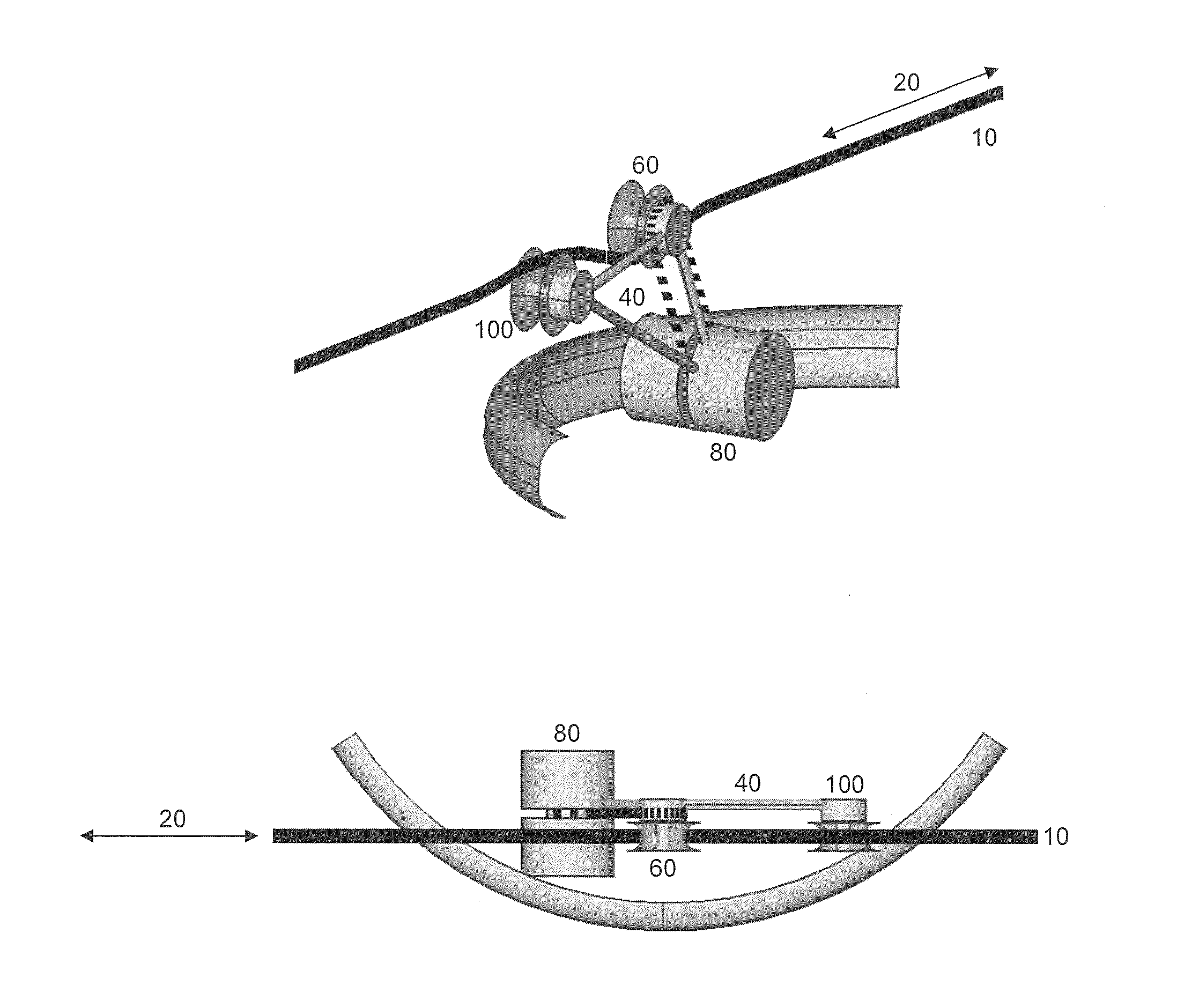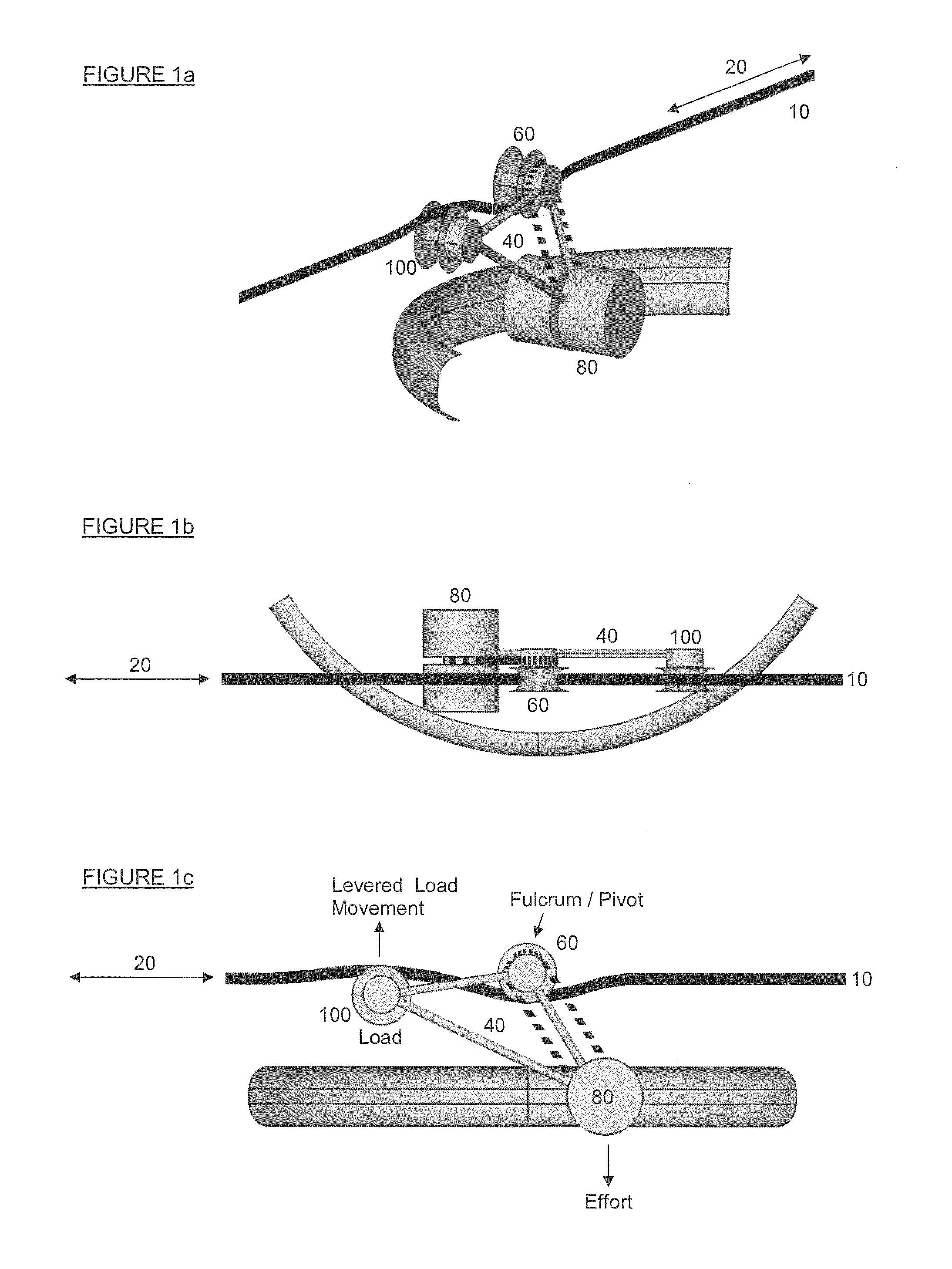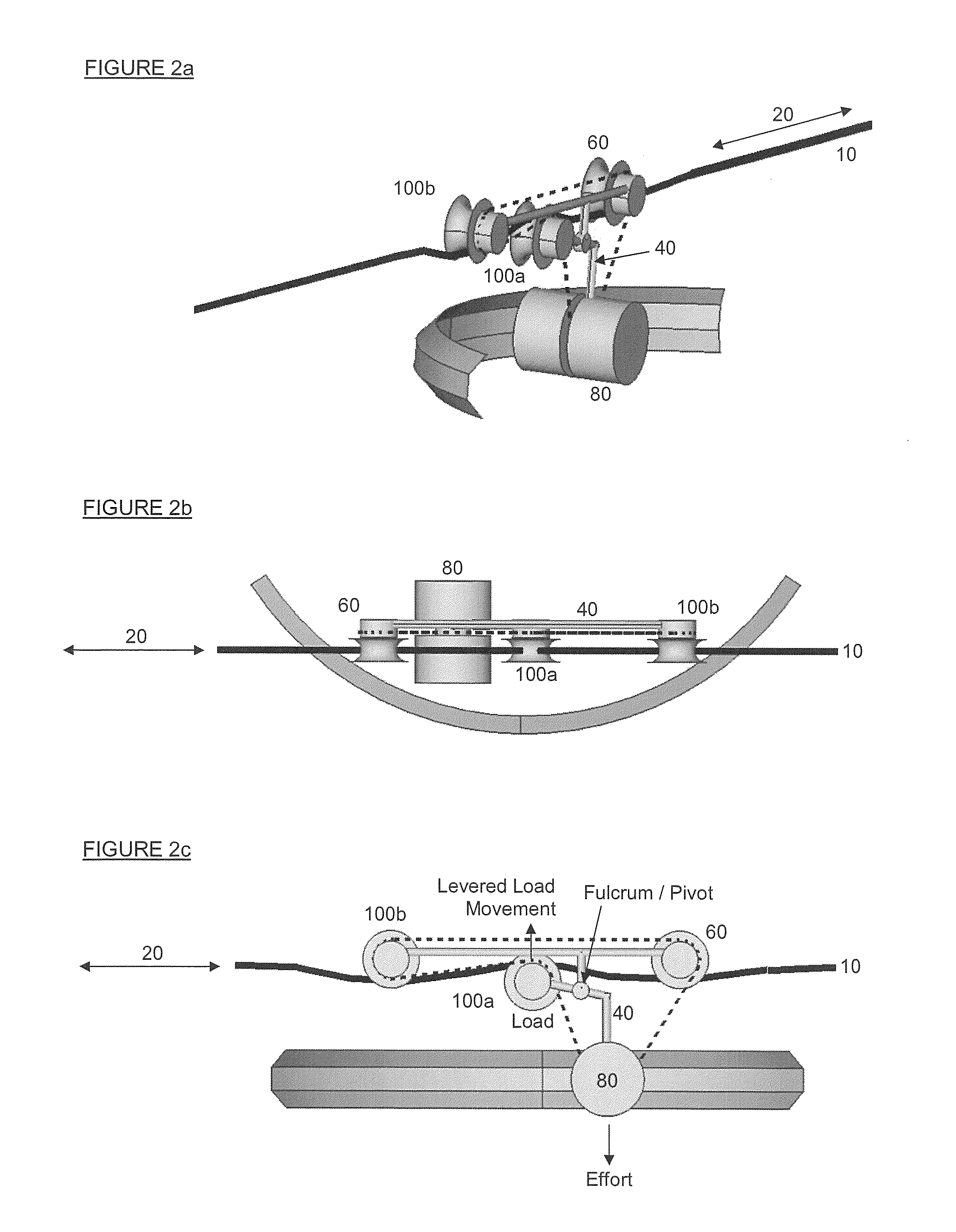Apparatus and method for ice and frost removal from power lines
a technology of power lines and apparatus, applied in vehicle maintenance, vehicle cleaning, cleaning equipment, etc., can solve the problems of ice to form ice weight can put a lot of stress on power lines or conductors, damage equipment, and weaken and break, and achieve less labor and time-consuming
- Summary
- Abstract
- Description
- Claims
- Application Information
AI Technical Summary
Benefits of technology
Problems solved by technology
Method used
Image
Examples
Embodiment Construction
[0054]Referring to the accompanying figures there is illustrated novel apparatuses for removal of extraneous matters, such as ice, frost, and snow, from power lines or conductors, that is less labor intensive and less time-consuming than conventional means.
[0055]FIG. 1 is a series of depiction of a first example of the apparatus of the present invention which is shown in perspective view (FIG. 1a), top plan view (FIG. 1b), and front view (FIG. 1c), in relation with its positioning on a length of conductor 10 having a longitudinal axis 20.
[0056]According to the illustration, the apparatus of the present invention comprises:
[0057](a) a frame 40;
[0058](b) a wheel 60 on the frame for rolling engagement along the longitudinal axis 20 of the conductor 10;
[0059](c) a motor means 80 to drive rotation of the wheel 60;
[0060](d) at least one guide element on the frame 40 for engagement with the conductor to cause a flexion in the longitudinal axis 20 of the conductor 10 when the wheel 60 is en...
PUM
 Login to View More
Login to View More Abstract
Description
Claims
Application Information
 Login to View More
Login to View More - R&D
- Intellectual Property
- Life Sciences
- Materials
- Tech Scout
- Unparalleled Data Quality
- Higher Quality Content
- 60% Fewer Hallucinations
Browse by: Latest US Patents, China's latest patents, Technical Efficacy Thesaurus, Application Domain, Technology Topic, Popular Technical Reports.
© 2025 PatSnap. All rights reserved.Legal|Privacy policy|Modern Slavery Act Transparency Statement|Sitemap|About US| Contact US: help@patsnap.com



